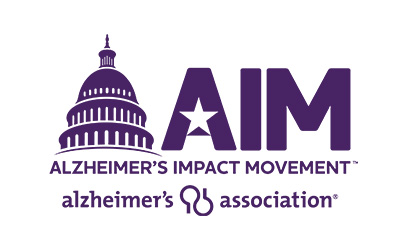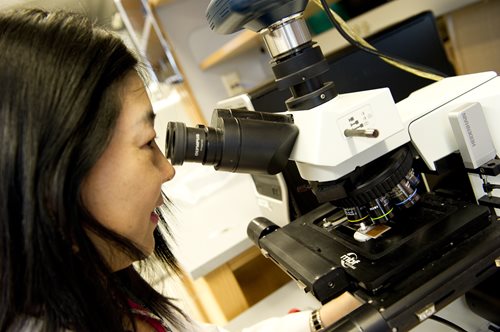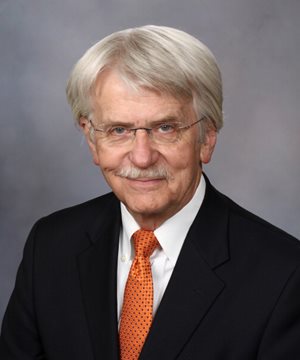
Triple Your Impact This Holiday Season
Triple Your Impact This Holiday Season
Celebrate the holidays with a year-end gift that can go 3x as far to help provide care and support to the millions affected by Alzheimer's disease, and to advance critical research. But please hurry — this 3x Match Challenge ends soon.
Donate NowDirector of Mayo Clinic Alzheimer's Disease Research Center Discusses the Lasting Impact of the National Alzheimer’s Project Act
Thank you for joining us, Dr. Petersen. As the first NAPA Advisory Council chair, tell us about how the goals of the Council were set 10 years ago.
In 2011, we laid down the groundwork for the plan, building the plane as we flew it. One of the first tasks of the NAPA Advisory Council, made up of 27 members including Alzheimer’s Association president and CEO Harry Johns, was to establish its primary goals. The council came together across all sectors, representing a broad range of stakeholders: federal and state agencies, researchers, clinicians, voluntary health associations and caregivers. Later, we had the vital representation from people living with Alzheimer's and other dementias. As government agencies touched by Alzheimer’s came around the table for the first time to talk about how the disease affects all of the sectors, we learned a lot, and the federal government learned how all the different agencies were impacted by Alzheimer’s disease.
The first United States National Plan to Address Alzheimer’s Disease was published in May of 2012. We started with five goals: improving patient care; developing support for caregivers; increasing awareness of the disease; monitoring progress; and our first goal, to prevent and effectively treat Alzheimer’s disease by 2025.
 This date seemed a long way off in the minds of many. However, the scientific and clinical community came together, knowing that we had to make a difference in the lives of people affected by Alzheimer’s and other dementias as soon as possible, enabling effective treatments to be used early, and ensuring that the millions of families affected would have the resources and support they needed. The numbers of deaths that occur annually due to some cancers, heart disease, and HIV/AIDS had already been steadily decreasing, while deaths due to Alzheimer’s and other dementias skyrocketed in the opposite direction, in a very dramatic fashion. Time was a luxury we didn't have.
This date seemed a long way off in the minds of many. However, the scientific and clinical community came together, knowing that we had to make a difference in the lives of people affected by Alzheimer’s and other dementias as soon as possible, enabling effective treatments to be used early, and ensuring that the millions of families affected would have the resources and support they needed. The numbers of deaths that occur annually due to some cancers, heart disease, and HIV/AIDS had already been steadily decreasing, while deaths due to Alzheimer’s and other dementias skyrocketed in the opposite direction, in a very dramatic fashion. Time was a luxury we didn't have. Once we developed our set of recommendations, the council passed those directly to Congress, which then went to the Secretary of Health and Human Services for their awareness. It was an opportunity for us to have a direct impact on both Alzheimer’s disease legislation and the federal budget, and there is no doubt in my mind that these NAPA activities had a huge influence then, and for years to come.
Let’s talk about the impact NAPA had on funding in the Alzheimer’s research community.
In 2011, we started with a $448 million federal budget for Alzheimer's disease research funding. Today, that number is $3.2 billion annually thanks in tremendous part to the Alzheimer’s Association advocacy with bipartisan policymakers.
When funding was tight, only the sure bets were being funded, typically from established researchers with a good track record. So what were we losing?
 We were losing not only young investigators, but also people with novel thinking: high-risk, high-reward hypotheses from outside of the box. You only need a few of those ideas to be successful to help turn the field on its ear.
We were losing not only young investigators, but also people with novel thinking: high-risk, high-reward hypotheses from outside of the box. You only need a few of those ideas to be successful to help turn the field on its ear.It’s because of this type of forward-thinking that Alzheimer’s and dementia researchers are not just looking at amyloid and tau therapies now. We're looking at inflammation, we’re looking at reactive oxygen species, we're looking at a whole host of other types of interventions that may be beneficial down the road, knowing that treating Alzheimer’s disease will probably require a combination of therapies. We have hope for the future for the millions of lives affected by Alzheimer’s and other dementias.
Tell us about the research summits that resulted from the initial groundwork set for NAPA.
One of the tangible outcomes of NAPA was the establishment of the summits that are held at the National Institutes of Health (NIH) every year: the Alzheimer’s Disease (AD) Summit, the Alzheimer’s and Related Disorders (ADRD) Summit and the Care and Support Summit. These three summits focus on Alzheimer’s disease, its related disorders, and care and support services for people living with Alzheimer's and other dementias, and their caregivers.
This has become a major activity, because out of these summits come tightly-structured recommendations that are then translated into milestones. First, recommendations make their way through the National Institutes of Health (NIH), where program staff then translate the recommendations into concepts, including vital clinical trials. These are reviewed by an advisory group at the National Institute on Aging (NIA). Program staff then turn them into requests for proposals, and this is when the research community marries these concepts with grants, allowing for a much richer portfolio of research, care and support services.
This is an example of how a bureaucratic system works well, leading to increased funding and heightened engagement of the scientific community. As council chair for six years, I saw this come to fruition, with input from a lot of good people along the way. When Dr. Laura Gitlin took over after me as the next council chair, she focused on the care and services side, and how other agencies were working together to focus on Alzheimer’s disease in their respective areas. Recommendations then emerged from the council, focusing on the need for more care providers, more geriatricians, more general practitioners. From there, the council worked on integrating education on Alzheimer's disease into the medical school curriculum as part of the general educational training program of physicians, nurses, and other medical professionals.
We had the surgeon general at the table, the CDC, the VA, the Bureau of Indian Affairs (BIA), the FDA. It was informative and instructive in and of itself, to have these people joining together — probably for the first time — and talking to each other about the Alzheimer's crisis.
How did NAPA enable vital funding for the Alzheimer's Clinical Trials Consortium (ACTC), a group which shares expertise to accelerate the development of interventions for Alzheimer’s disease and related disorders?
One of the early outcroppings at one of the first summits was to answer this question: Where does the clinical trials network fail? How can clinical trials be more efficient, more effective? The recommendation to inventory and overhaul the clinical trials networks for Alzheimer’s disease in this country stemmed from NAPA, which created the opportunity to build upon and leverage the U.S. Department of Health and Human Services (HHS) programs and other federal efforts to help change the trajectory of Alzheimer's disease and other dementias.
Alongside Dr. Reisa Sperling and Dr. Paul Aisen, I am one of the lead principal investigators for the ACTC. Ultimately, the ACTC was founded because of the work we were doing through NAPA and the concepts we were moving forward. Today, the ACTC is set up to evaluate novel therapies and to engage the scientific community more directly in order to have a clinical trial-ready network of sites. This means that the 35 participating sites in the ACTC are already geared up to go, with staff on board and infrastructure in place. Now, when a trial gets approved by NIA for the treatment of Alzheimer's disease, it gets plugged into the consortium, and they are off and running.
How has your team’s work at the Mayo Clinic Alzheimer's Disease Research Center been impacted by NAPA?
Like every other academic institution, the Mayo Clinic has been a beneficiary of grants as a result of the increased federal investment. In addition to our research center, we have another major project, the Mayo Clinic Study of Aging, a population and community-based study of people aging in place, which asks: How do we evaluate the general public with regard to their risk factor profiles for developing Alzheimer’s disease?
Most of the data from academic medical centers comes from what are known as convenience populations: People interested in a specific disease entity who see an ad, or who are referred by their personal physician. From that, important biomarkers — which we use to see how well the body responds to a treatment for the disease — are developed in clinical trials, and we can now look at how those same biomarkers perform in the general community. What we found is that many of these biomarkers and risk factors do exist, but they commingle with other factors, such as hypertension, heart failure, diabetes, and anxiety disorders, simply because these all exist in the general community. This area where risk factors meet biomarkers requires more research.
The work of NAPA is allowing us to bring back a new generation of Alzheimer's researchers to further this kind of work. Looking back 10-15 years ago, when young researchers saw their mentors struggling for funding, they certainly didn't expect to see their own work funded. When I testified in front of the Senate Special Committee on Aging, this was something we highlighted: We are losing the next generation of researchers that we so desperately need. Neurological diseases are complex, and there is no quick fix. The work of NAPA has propelled us forward, and today, the environment is very different from what it was a decade ago.
What do you consider NAPA’s most lasting impact on Alzheimer’s and dementia research, and where do we go from here?
The broadening of the horizon — new people and ideas coming into the field, and sustaining it going forward — is by far the largest impact that NAPA has had. It has encouraged new thoughts from the next generation of Alzheimer’s disease investigators, as well as investigators from other fields. Sustaining this reach and growth will allow us to continue to encourage all of these new thoughts and hypotheses.
The clinical trials front needs to be continued to be pursued — that's where we're going to make our impact — so collaborating with experts in other fields is imperative. Learning more about underlying pathological elements in people with Alzheimer’s and other dementias needs to continue to be investigated, and the more we appreciate this broader array of pathologies, the more we can help investigators moving forward.
 We must continue to make an investment in the future, because we're going to be studying Alzheimer’s and other dementias for decades to come. We need new, bright minds to help unravel these mysteries, and opening up the field to more people, across all sectors, has been a hugely positive result of NAPA. Collaboration is the only way for us to continue to learn, and there is still much to be discovered.
We must continue to make an investment in the future, because we're going to be studying Alzheimer’s and other dementias for decades to come. We need new, bright minds to help unravel these mysteries, and opening up the field to more people, across all sectors, has been a hugely positive result of NAPA. Collaboration is the only way for us to continue to learn, and there is still much to be discovered.Join the Alzheimer's Association in calling on Congress to renew their commitment to Alzheimer’s and dementia research funding. Act now.
About: Ronald C. Petersen, M.D., Ph.D. directs the Mayo Clinic Alzheimer's Disease Research Center and the Mayo Clinic Study of Aging, both of which involve the study and characterization of aging individuals over time, with an emphasis on neuroimaging and biomarkers.
